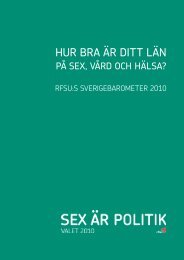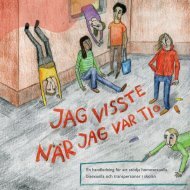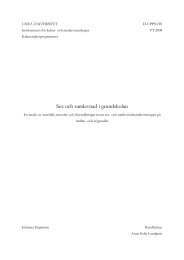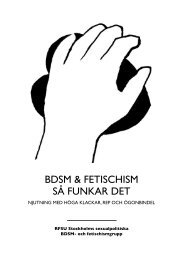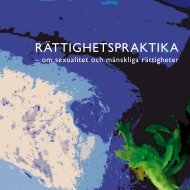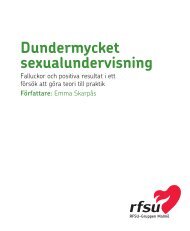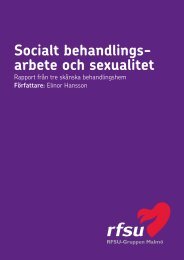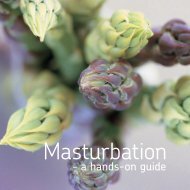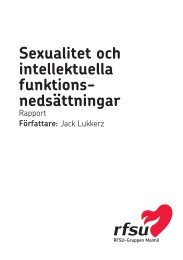Download pdf - RFSU
Download pdf - RFSU
Download pdf - RFSU
Create successful ePaper yourself
Turn your PDF publications into a flip-book with our unique Google optimized e-Paper software.
Sexuality<br />
Two thirds of the men (i.e. 20) had an ongoing sexual<br />
relationship with a steady partner. Almost all (i.e. 27)<br />
reported problems such as pornographic consumption,<br />
making sex-calls, obsessive masturbation or troublesome<br />
sexual fantasies since their early teens. Some (i.e.<br />
7) described abnormal sexual desires. Their debut for<br />
purchasing the services of a prostitute was on average 24<br />
years of age. Sex purchases were of different kinds, with<br />
a dominance of street prostitution<br />
The overall picture<br />
Most of the men had a troublesome past, but had been<br />
brought up with both their biological parents. Many of<br />
them described their father as being emotionally distant,<br />
though physically present. Relationships with the mothers<br />
were often described as complicated, demanding<br />
and lacking in freedom. Many of the men felt inferior<br />
to their partners, who were often described in positive<br />
terms. Often the men spoke of a feeling of powerlessness<br />
in relation to their sexual obsession. The reason for their<br />
contact with the clinic was usually that their partner has<br />
exposed them, or that they felt that they were destroying<br />
their lives. They tended to express a desire for fast and concrete<br />
solutions to their problems, and a need to find out<br />
how they should behave in order to stop their behaviour.<br />
At the same time, many expressed a fear that abstinence<br />
from the very behaviour they sought help for would lead<br />
to loss of control or insanity.<br />
In general, the picture that emerged of the men<br />
seeking help at <strong>RFSU</strong> seemed to compare well with the<br />
picture that has described in other research and reports<br />
(e.g. Sandell)<br />
The women<br />
Initial contact<br />
Many of the women contacted us after being pressured<br />
into it, or after being referred by others. The initiative to<br />
contact with the clinic did not often come from the women<br />
themselves. A worrying environment, eager for some<br />
sort of therapeutic contact, put pressure on them. Often<br />
it was social workers, relatives or friends who alarmed by<br />
the self-destructiveness of the women’s behaviour, hoped<br />
that a contact with the clinic would change the situation.<br />
The women themselves were not always as concerned.<br />
Many of them had previous contacts within the health<br />
care system (sometimes for several years), but had often<br />
not communicated their experiences with prostitution.<br />
Contrary to the men, women did not focus on expressed<br />
difficulties with their own sexuality. Instead they<br />
tended to wonder why they always exposed themselves<br />
to dangers or why they could not have intimate relationships.<br />
Background<br />
Of the twenty-five women taking part in the project,<br />
eleven had university education, fourteen were employed,<br />
and five were students. Only a few of the women (i.e. 3)<br />
were receiving regular benefits from the social services. At<br />
the time of initial contact with the clinic fourteen were<br />
single, and eleven were married or in a steady partner relationship.<br />
A little less than a third (i.e. 8) of the women<br />
had children and almost all had custody of them. Age<br />
varied from 18 to 50 years, the majority were under 30<br />
years old.<br />
In terms of their psychiatric status, ten of the women<br />
had eating disorders, and nine had previously tried to<br />
commit suicide. Eleven reported psychosomatic disorders,<br />
11



